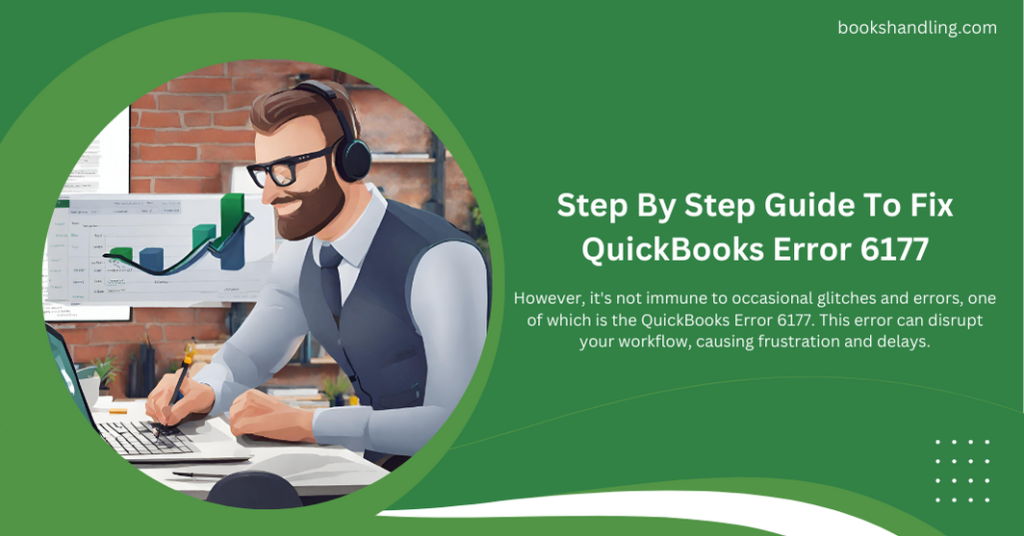
What is QuickBooks Error 6177?
QuickBooks Error 6177 occurs when QuickBooks attempts to open a company file but fails to do so from the path where the File is located. This error typically presents itself with the message: “QuickBooks is attempting to open this Company file.” It suggests that QuickBooks cannot use the path to the company file and needs assistance resolving the issue.
Causes of QuickBooks Error 6177
Understanding the root causes of Error 6177 can help in effectively tackling the problem. Here are some common reasons why this error occurs:
- Path Issues: The software needs help with the path to the File because it does not point directly to where the File is stored.
- Network Issues: If your company file is stored on a server or an external hard drive, connectivity problems can trigger this error.
- Corrupted File: At times, the company file itself might be damaged or corrupted.
- Outdated Version of QuickBooks: Using an outdated version of QuickBooks can lead to compatibility issues with company files created or modified by newer versions.
- Permissions: Insufficient permissions for the network drive can also lead to this error.
Step By Step Guide To Fix QuickBooks Error 6177
Follow these step-by-step solutions to resolve QuickBooks Error 6177 effectively:
Step 1: Update QuickBooks
Before proceeding with complex solutions, ensure your QuickBooks is up-to-date. This can resolve many issues, including error 6177.
- Open QuickBooks.
- Go to Help > Update QuickBooks Desktop.
- Click on the Update Now tab.
- Click Get Updates.
- Restart QuickBooks after the update completes.
Step 2: Move the Company File
If the issue persists, try moving the company file to the local drive.
- Locate the company file on the network drive.
- Copy the File and paste it to the local drive (preferably the desktop).
- Open QuickBooks and go to File> Open or Restore Company.
- Browse to the new location of your company file and select it.
- Check if the error still appears.
Step 3: Use the QuickBooks File Doctor
QuickBooks Tool Hub includes a File Doctor that can diagnose and repair common issues with company files.
- Download and install the QuickBooks Tool Hub from Intuit’s official site.
- Run the tool and go to the Company File Issues tab.
- Click on Run QuickBooks File Doctor.
- Select your company file from the drop-down or browse to locate it manually.
- Choose Check your File and click Continue.
- Enter your QuickBooks admin password and click Next.
Step 4: Manually Resolve the Path Issue
If the error is not resolved, manually rectify the path issue.
- Close QuickBooks on all machines.
- Navigate to the folder where the company file is stored.
- Find the File with a .ND extension.
- Delete this File.
- Open QuickBooks and try to create a new company file path.
Step 5: Configure Permissions
Ensure the network drive where the company file is stored has the correct permissions set.
- Right-click the folder with the company file.
- Select Properties.
- Go to the Security tab.
- Click Edit to modify permissions.
- Ensure that all users have full control.
- Apply changes and check if the error is resolved.
FAQs
Q1: What is QuickBooks Error 6177?
A: The error usually indicates that QuickBooks is unable to connect with your bank’s website and fetch user’s data from it.
Q2: Can QuickBooks Error 6177 prevent other software operations?
A: Yes, it can prevent you from opening your company file, which might hinder other software operations.
Q3: Is it safe to delete the .ND File?
A: Yes, it is safe, as QuickBooks automatically recreates it when you open the company file next time.
Q4: What should I do if none of the above steps work?
A: If the error persists, it might be due to more complex issues. It is recommended that you contact QuickBooks support for professional help.
Conclusion
QuickBooks Error 6177 can be a nuisance, but with the right approach, it is solvable. Following the steps outlined in this guide can help restore your workflow and ensure that your financial data management is as smooth as ever. Always remember to keep QuickBooks updated and regularly back up your data to avoid such errors in the future.

